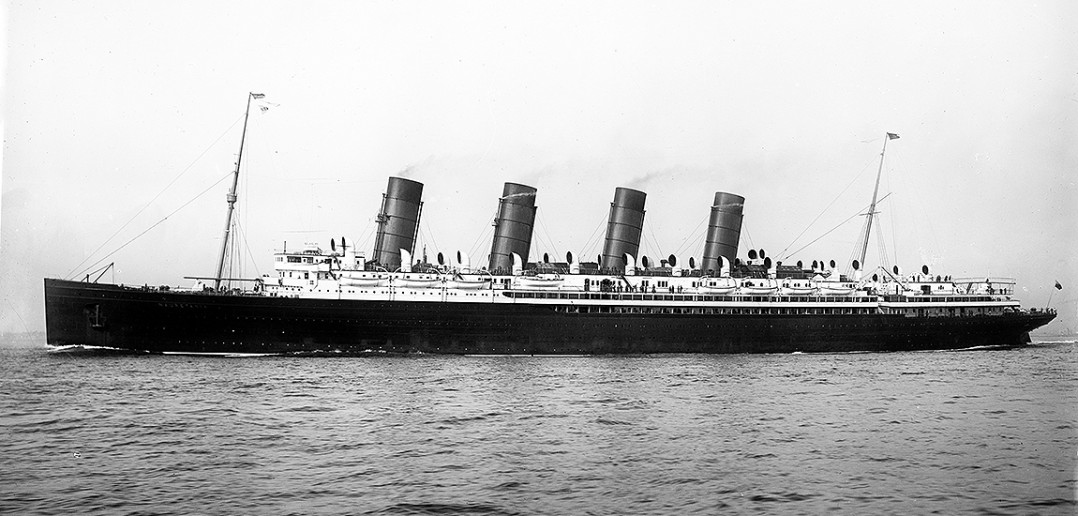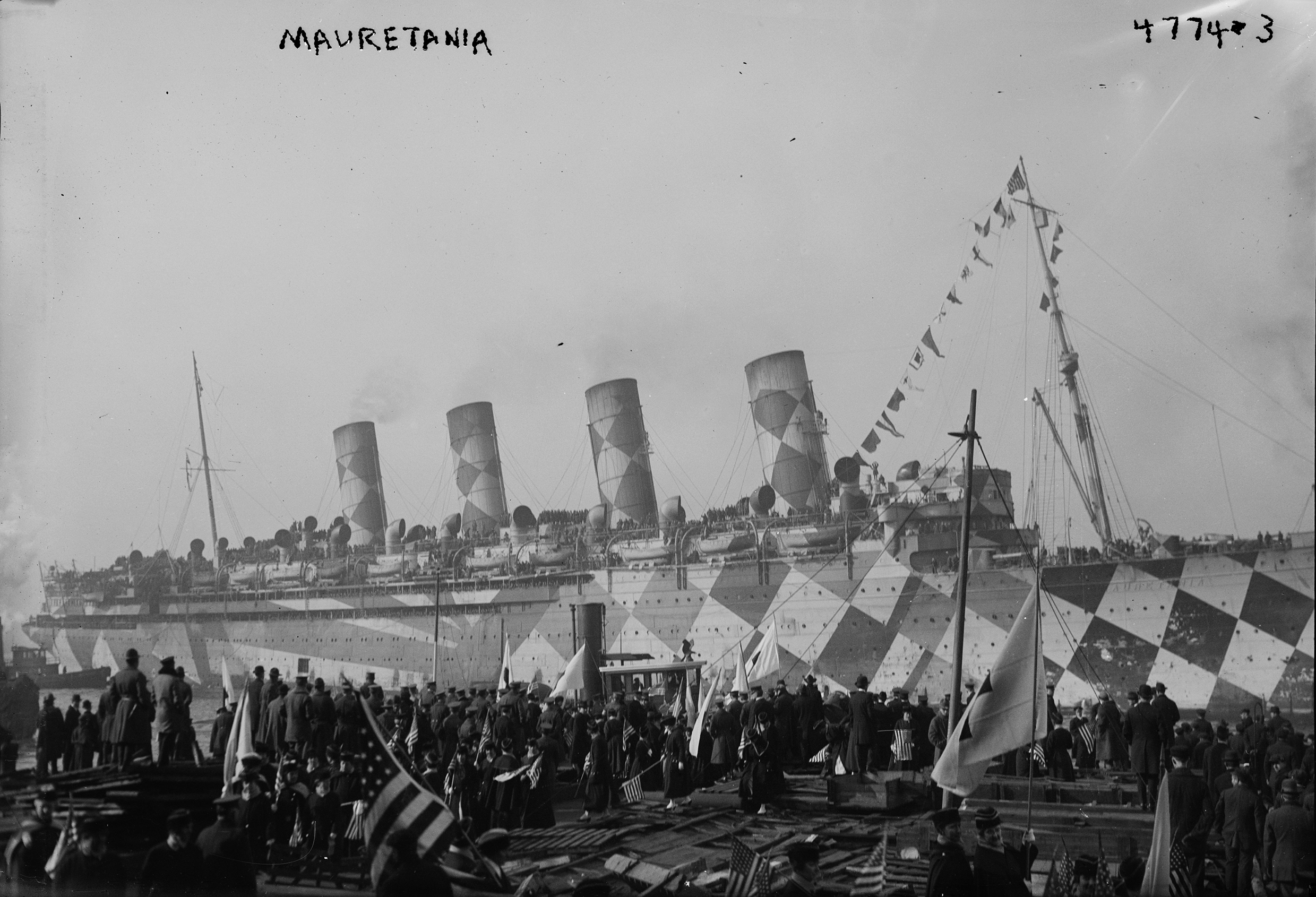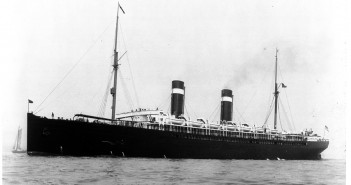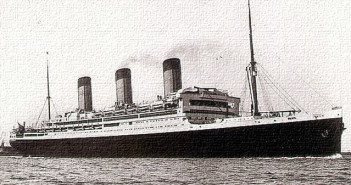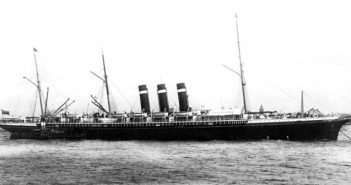Mauretania (1907) left Liverpool on her maiden voyage on 16 November 1907 under the command of Capt. John Pritchard.
The new superliner was 790 feet long and 88 feet wide and 31,938 GRT. She was equipped with steam turbines and quadruple screws. The ship had a service speed of 25 knots and capacity for 2,335 passengers-560 in first class, 475 in second class and 1,300 in third class.
Bound for New York, Cunard Line’s largest and most opulent liner to date ran into severe storms and heavy fog, preventing her from setting any records. Nonetheless, Mauretania managed to arrive in New York on 22 November without any major incidents.
Later that month, under better conditions, Mauretania captured the record for the fastest eastbound crossing with an average speed of 23.69 knots. In September 1909, Mauretania won the Blue Riband for the fastest westbound crossing. She would hold the honor for more than two decades.
Mauretania’s interior design was pure Edwardian opulence. Room styles ranged from French Renaissance to English Country. The first-class lounge, decorated in an 18th-century French style, was one of the vessel’s most striking rooms. Mauretania also featured a two-tiered first-class dining saloon, lavish lounges, a verandah café, smoking rooms, libraries, private parlours, and an exotic palm court.
Mauretania served as a hospital ship and troopship during World War I, transporting thousands of British, Canadian, and US soldiers through hostile waters and to and from war zones. The liner resumed commercial voyages in 1920.
Mauretania would continue to sail for Cunard until 1934, when the Great Depression and the arrival of sleeker, faster, and more efficient liners would turn her into a money loser for the company.
Such was Mauretania’s reputation for speed, style and service that a new Cunard liner would soon be named in her honor: Mauretania (1938).


Please help keep Ocean Liners Magazine afloat. Any amount will be greatly appreciated.
—Regards, John Edwards, Editor/Publisher.

